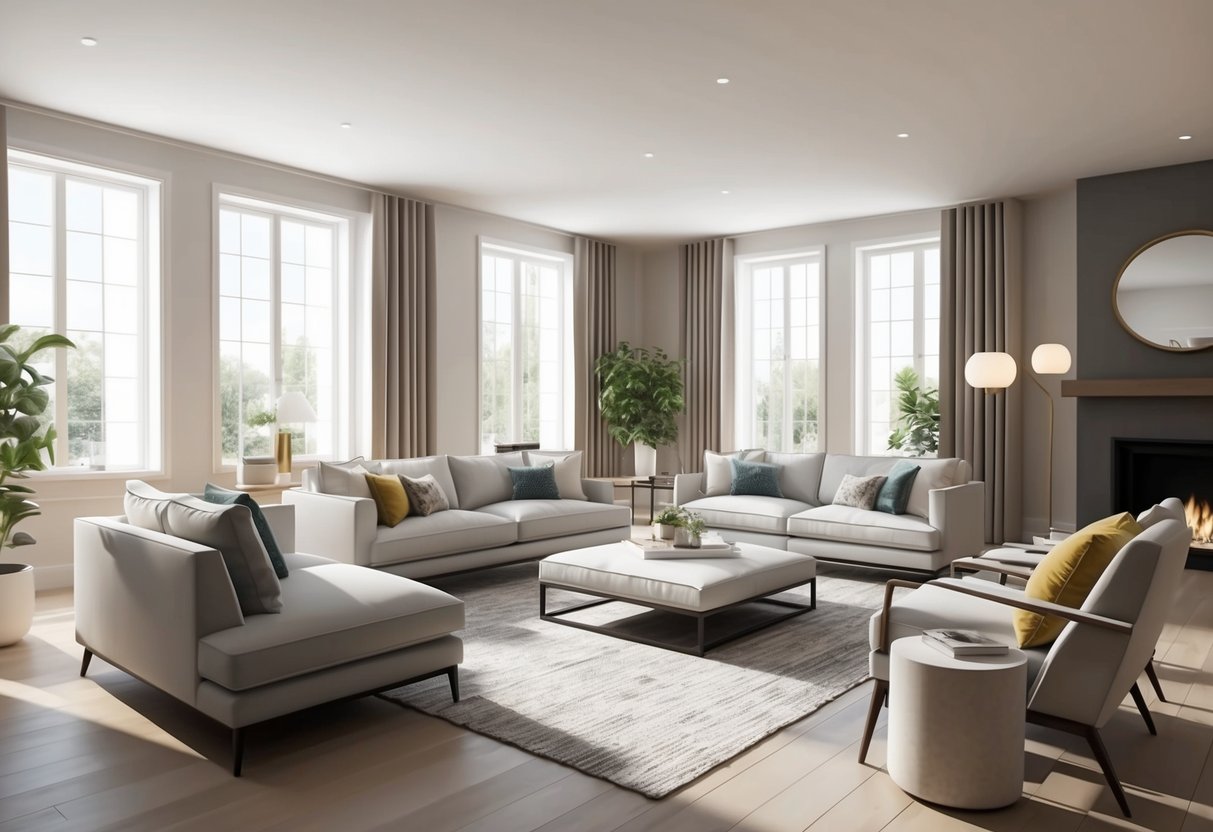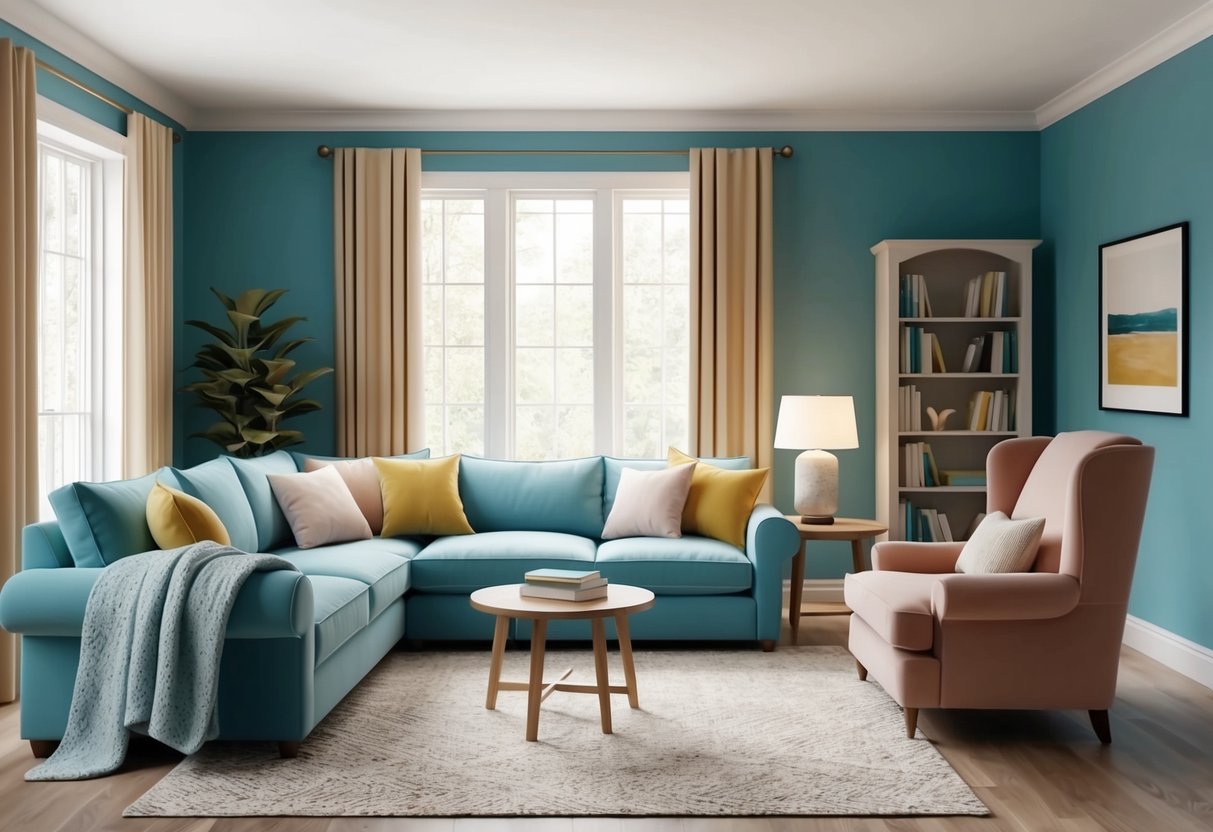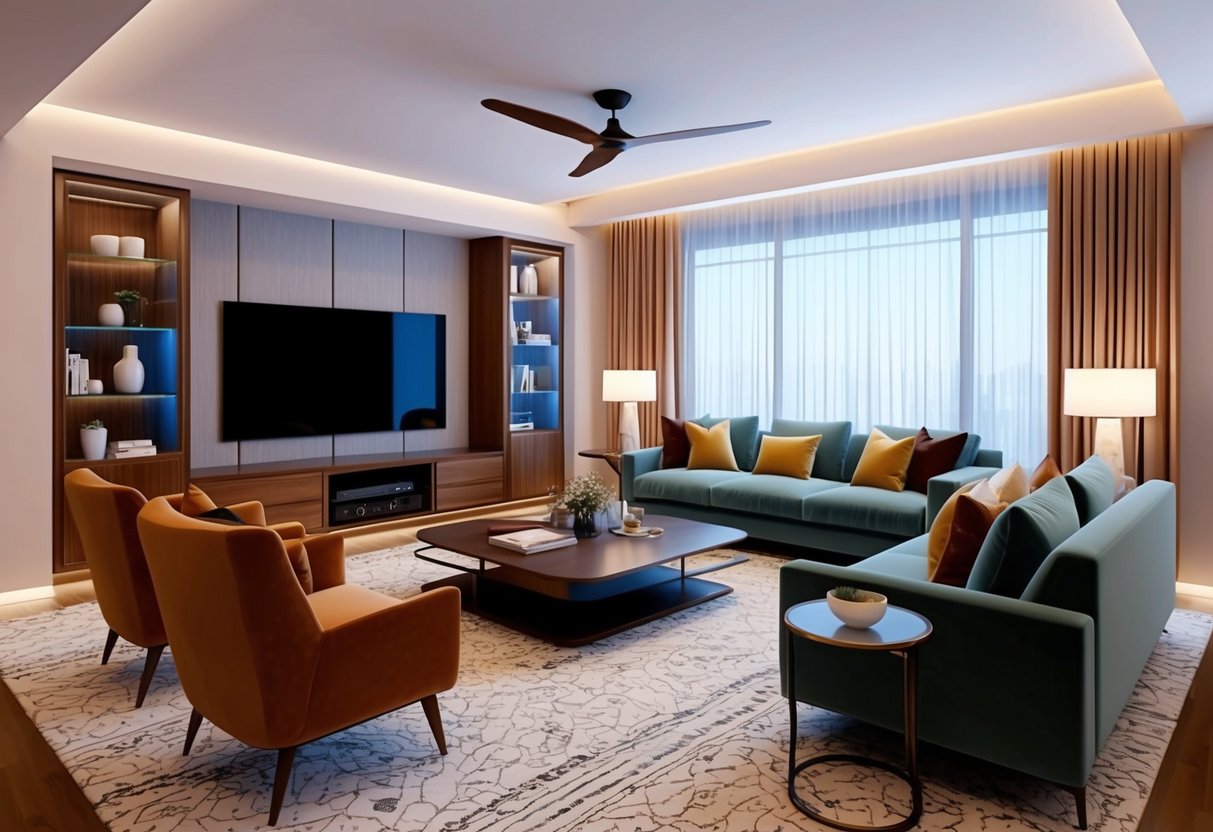
Creating Cozy Zones and Reading Nooks

Small touches, such as a designated cozy nook, help create inviting spaces within any living room. The right combination of furniture, lighting, and accessories can transform overlooked areas into comfortable retreats perfect for relaxation or reading.
Designing a Relaxing Reading Nook
A well-designed reading nook centers around comfort and light. Start with a plush armchair, chaise, or cushioned window seat that offers back support for longer reading sessions.
Incorporate layered textiles—think of throw blankets, soft area rugs, and supportive cushions—to create warmth and texture. Good lighting is essential for any cozy reading nook.
Combine a nearby window for natural sunlight during the day with a floor or table lamp that provides focused, adjustable light in the evenings. Add a side table to hold books, beverages, or reading glasses, increasing both functionality and organization.
Decorative elements such as framed art or potted plants bring a calming ambiance. Personalizing the area with a favorite color palette or curated bookshelf helps foster a space for relaxation and focus.
Explore more cozy reading nook ideas for additional inspiration.
Cozying Up Unused Spaces
Transforming underutilized spaces—such as corners, alcoves, or the area beneath a staircase—can maximize both function and style. Even a small or awkward spot can become inviting with the right approach.
Key steps for making the most of unused areas:
- Choose furniture sized to fit the available space, such as a compact accent chair or a built-in bench.
- Use floating shelves to store favorite books, decorative baskets, or small accessories.
Integrate soft lighting, like wall sconces or string lights, to add ambiance without taking up floor space. Emphasize tactile comfort with textured throws, plush pillows, and natural elements.
Adding detail with signature furniture pieces or greenery ensures the area feels intentional, inviting, and distinct from the rest of the living room.
Frequently Asked Questions

What are some budget-friendly ways to decorate my living room?
Affordable updates can start with rearranging existing furniture to open up space and improve flow. Adding throw pillows, decorative blankets, or a new area rug introduces color and texture without a large investment.
Updating lamp shades or using layered lighting creates a more inviting atmosphere. Thrifted or secondhand decor pieces, such as vases or artwork, can personalize a room inexpensively.
Consider DIY wall art or repurposing items you already own for a fresh look. Try focusing on a curated collection of accessories to avoid clutter and tie the design together.
Can you recommend steps to design a living room from scratch?
Begin by measuring the room and noting any architectural features like windows, doors, and focal points. Decide on the primary activities for the space, such as entertaining, relaxing, or watching TV, to determine the best layout.
Picking a clear design aesthetic and cohesive color palette helps keep all choices unified. Create a simple mood or room board with images of furniture, fabrics, and paint samples to visualize everything together.
Select foundational pieces first, such as a sofa or media unit, then layer in smaller furniture and accessories as the design develops.
What are key principles of interior design to consider for a living room?
Functionality, balance, and harmony should guide decisions in living room design. Make sure furniture arrangements encourage conversation and allow for clear walkways—ideally, provide about 30–36 inches between large pieces where space allows, but at least 18–24 inches as a minimum guideline.
Use a mix of materials, colors, and shapes to create visual interest, but stick to a unified color scheme for a cohesive look. Consider lighting as another key element—ambient, task, and accent lighting can all influence mood and utility.
How can I achieve a modern look in my living room?
A modern living room often features clean lines, neutral or monochromatic color schemes, and simple silhouettes. Choose streamlined furniture and avoid ornate detailing or excessive decoration.
Incorporate materials like metal, glass, and light woods for a current appeal. Minimal accessories and clutter-free surfaces help maintain a modern feel.
If desired, add one or two bold accents—such as a statement light fixture or abstract artwork—to give the space character without overwhelming it.
What are some simple decorations I can add to my living room for a refreshed look?
Swapping out throw pillows and blankets for different textures or patterns is an easy way to lift the room’s appearance. Houseplants, fresh flowers, and decorative bowls can bring in color and a sense of life.
Changing up picture frames, adding new artwork, or styling shelves with a few carefully selected objects also help refresh the space. Table lamps, floor lamps, and candles can contribute to a cozier, more flexible lighting scheme.
Introducing a new accent rug or hanging an eye-catching mirror provides instant style without major renovations.
How can I effectively plan my living room layout for both function and style?
Start by identifying the room’s main focal point, such as a fireplace, TV, or feature wall. Arrange seating to face or complement this element.
Ensure there’s enough space for movement between pieces. For gatherings and conversation, consider pulling sofas and chairs away from the walls and grouping them closer together.
Maintain clear paths for everyday traffic flow. Strive for a balance between larger furniture and open areas to keep the room from feeling overcrowded.